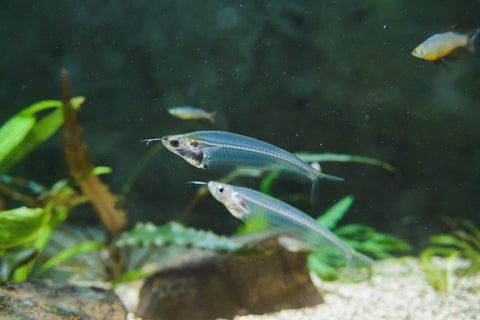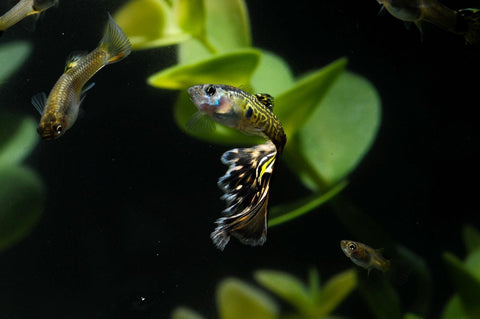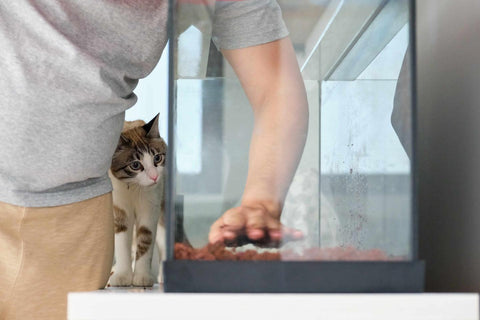The Indian glass catfish, scientifically known as Kryptopterus bicirrhis, is a fascinating freshwater fish species that is becoming increasingly popular with aquarium enthusiasts. It is with great pleasure that we will take a closer look at this fascinating fish and consider its special characteristics as well as how to care for and keep it correctly.
Features of the Indian glass catfish
The Indian glass catfish is characterized by its transparent body, which gave it its name. It has an elongated body and is equipped with two barbels that help it with orientation and foraging. Its coloration varies from pale yellow to silver, and its large eyes give it a fascinating expression.
Indian glass catfish can reach a length of up to 15 cm and are therefore rather larger fish. Their transparent appearance allows them to adapt perfectly to their environment and escape potential predators.
Another remarkable feature of the Indian glass catfish is its ability to generate electrical signals. These signals are used to communicate with other fish and mark their territory. It is fascinating to observe how they use these electrosensory abilities to navigate in the dark and find their prey.
Care and keeping
The Indian glass catfish is a peaceful and social fish that can be kept well with other species in a community aquarium. It is important to provide sufficient space and hiding places, as these fish like to live in groups and like to hide.
As far as water conditions are concerned, they prefer clean and well-filtered water with a temperature of 24-28°C and a pH value between 6.5-7.5. The addition of plants and floating plants in the aquarium creates a natural environment and offers the fish protection.
It is advisable to keep the Indian glass catfish together with other peaceful fish species that prefer similar water conditions. Together they form a harmonious and interesting underwater world.
In terms of diet, Indian glass catfish are omnivores. They like to eat live and frozen food such as mosquito larvae, artemia and daphnia. It is also important to provide plant-based food in the form of vegetables and flakes to ensure a balanced diet.
Feeding should be in appropriate portions to avoid excess and contamination of the water. Regularly checking the water quality and changing some of the water if necessary are also part of proper care.
To ensure the health and well-being of Indian glass catfish, it is important to keep their environment clean and regularly clean the filter and aquarium.
Breeding
Breeding the Indian glass catfish requires specific conditions and is not easy to implement in a home aquarium. The fish must be moved to a separate breeding tank, which is equipped with fine plant material and a dark substrate.
The parent fish lay their eggs on the underside of leaves or other surfaces. The animals hatch after a few days and the young fish can be fed with special rearing food.
Raising fry requires a lot of attention and knowledge of the correct feeding and water quality. It is advisable to obtain thorough information about breeding and rearing beforehand or to seek advice from experienced breeders.
Breeding the Indian glass catfish can be an exciting undertaking, but it requires patience and commitment to be successful.
The fascination of the Indian glass catfish summarized
The Indian glass catfish is a fascinating fish that is popular not only because of its transparent body, but also because of its peaceful and social behavior. With the right care and husbandry, you can have a lot of fun with these fascinating creatures
However, it is important to be thoroughly informed about their needs before purchasing them and to ensure that you can provide the right conditions for their care. With a little knowledge and commitment, keeping the Indian glass catfish can be a rewarding and enriching experience.





Comments (0)
There are no comments for this article. Be the first one to leave a message!